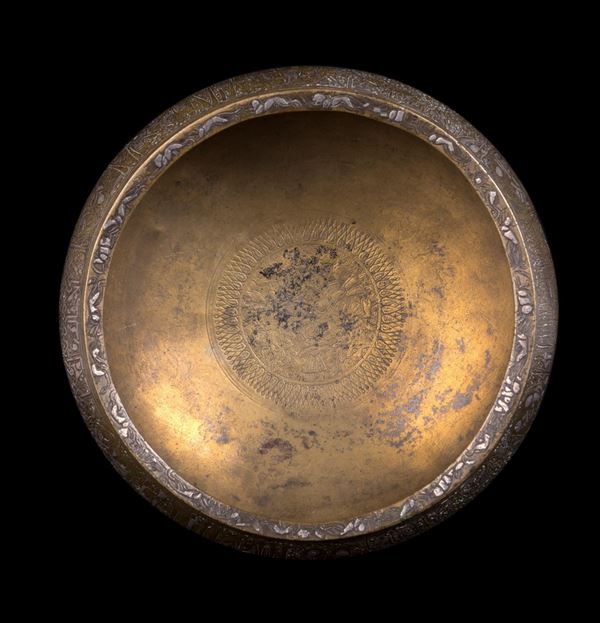A SILVER-INLAID AND ENGRAVED BRASS BOWL, Syria or Iran, 13th - 14th century
Of round body, with convex walls, short straight edge, and a slightly inward-projecting rim. The outer decoration consists of a large band featuring broad inscriptions in knotted, foliated, and animated Kufic, and thuluth on an arabesque background. The epigraphic frieze is interspersed by figured medallions with musicians, dancers, and scenes of fighting or playing embellished with silver inlay. Below, a lambrequin based on intertwined small arches carrying short lancet palmettes. The rim is covered with a continuous frieze featuring
animals, including an elephant gored by a unicorn. In the centre of the interior, there is a large round medallion framed by a lambrequin of interlaced palmettes and featuring three standing figures against an arabesque background, while the external base is occupied by a polylobed medallion with interlaced floral motifs.
Catalogue notes: The elephant gored by a unicorn is a rare motif, featuring on a Mamluk bowl kept at the Civic Museums of Turin (inv. no. 159). The morphology and dimensions, the decoration divided into horizontal bands, and the lancet palmette motif recall two later Ilkhanid bowls kept at the Museo Nazionale del Bargello (inv. No. 7161) and the V&A (inv. No. 760-1889).
Compare the lot sold by Sotheby's, auction number L16223, Arts of the Islamic World; 19 October 2016, London, lot. 225 and currently at the Agha Khan Museum in Toronto (inv. no. 2016.4.2), similar in shape, working technique, and decoration but significantly larger in size.






